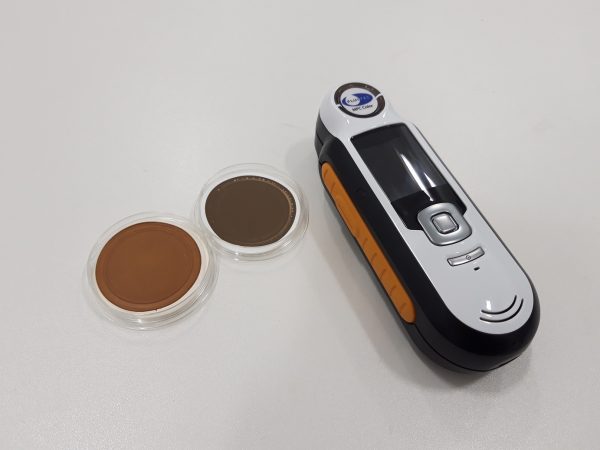Is it time you vanished the varnish in your hydraulic system?
When it comes to oil condition management, varnish is a hot buzzword. But what is it? And can this one word really be an accurate description for every sludge-like material that develops in your hydraulic or lubricating system?
In this article, Sam Keating, Laboratory Manager, Fluid Care Division, Hydac Technology Ltd. discusses the basics of varnish; how it forms, how to identify it and what to do if you find a build-up of sludge in your tanks or filter elements.
What causes the formation of varnish?
Varnish is a good generalisation for the conglomeration of sediment products that can build up after extended degradation of the base oil; it effectively describes the yellow/brown sludge that you may notice in tanks or on used filter elements.
- Effectively, oil degradation describes the fracturing of oil molecules and the constituent additives; these broken molecules can ultimately stick to each other, as well as other contaminants present, to form varnish.
What is the cause of oil degradation in the first place?
The process is called oxidation, which essentially describes the reaction of the base oil with oxygen. Many factors can act as catalysts to speed up this process, some of the key contributors are:
-
- Contamination of various types:
- Solid Particulates – whether it’s environmental residue that has entered the system or wear metals, any form of solid material will aid the varnish formation process. Oxidation products also stick to these contaminants to increase the quantity of sludge.
- Water – even dissolved water can heavily contribute to the oxidation process, which is why a maximum water saturation of 50 per cent for your mineral-based oils is recommended in hydraulic and lubrication applications.
- Gas – typically looking at the presence of air in oil, it stands to reason that the introduction of more oxygen containing materials will assist the unwanted oxidation process.
- Excessively Stressful System Parameters – pressures and temperatures that are beyond the fluid’s capability can quickly cause the deterioration of the fluid. For example, excess temperatures can mean thermal degradation; it’s important to remember that for every 10°C increase, the rate of reaction is doubled.
- Electrostatic Discharge (ESD) – this is a phenomenon where discharge sparking occurs within a system; this typically occurs in the filter housing. The temperature of the discharge spark is greater than 10,000°C. These sparks cause the oil molecule to ‘crack’, forming free radicals. These radicals continue to react with other oil molecules, oxygen and other radicals. The resulting oxidation products can then conglomerate to form the sludge-like material that we call varnish.
- Contamination of various types:

Why is varnish a problem and why do we bother measuring it?
The sludge that builds up in a system can be damaging in many ways. A few of the key issues are:
- Malfunctioning Valves – the sticky nature of oxidation products is a huge factor in the problems caused. With valves it is easy to imagine that a build-up of sludge can prevent the normal function of valves, sticking of spools etc. Clearly the end result of this can be serious, especially if the valves in question are required for a safety function.
- Blocked Filters – typical inline pressure filters are developed to filter out solid particulates of various shapes and sizes. Many use depth filtration, where multiple layers are used to filter out a complex range and large quantity of contaminants. This level of technology can result in a more expensive filter, but it is still cost-effective when performing its intended duties. However, instead of using the full range of filtration media embedded, varnish will stick to the exterior of the filter; this causes premature blocking and high costs due to increased frequency of element changes.
- Reduction in Lubrication Gaps – the incompressible nature of oil is the reason it is used for these high pressure and power applications. Lubrication gaps are the pockets of lubricant that prevent direct metal-to-metal contact in the system, therefore preventing wear and extending the lifetime of components. If oxidation products begin to deposit in these areas, the amount of lubrication is reduced and the level of wear can drastically increase.
- Obstruction of Heat Transfer – due to the nature of varnish, its solubility in the oil is dependent on the operating temperature; at higher temperatures the sludge can remain dissolved, but at lower temperatures it can become free. Because of this, varnish will typically deposit on colder surfaces, such as cold elbows in the system, tank walls or any cooling devices. If a cooler is subject to sludge build up, the heat exchange capability will be reduced. This will raise the system temperature and further contribute to the oil ageing process.

If you start to see any of these symptoms in your system, laboratory testing is the definitive solution to determining whether oxidation products are at fault.
There are a multitude of tests available and choosing a wider range of analyses will provide the most information to allow for a greater informed decision, some considerations are:
- MPC (Membrane Patch Colourimetry) – traditionally developed for turbine lube oil applications, this procedure extracts any insoluble contaminants onto a filter membrane and assigns an index value based on colour; essentially, the darker the membrane, the greater the risk of varnish deposition in the system.
- RULER (Remaining Useful Life Evaluation Routine) – a technique using linear sweep voltammetry that measures the phenolic and aromatic amine antioxidants. By comparing used and new samples, a percentage of useful remaining antioxidant content can be obtained. These antioxidants act as a scapegoat for the base oil, reacting with oxygen before any harm comes to the oil itself; therefore it stands to reason that, if the antioxidants have depleted, the rate of base oil oxidation will increase and more varnish will build up within the system.
- FTIR Spectroscopy – through infrared absorbance, different compounds can be identified thanks to their unique spectroscopic signatures. Oxidation products are one such set of compounds that can be observed through FTIR; identifying spectrum peaks around the 1750 cm-1 region typically translates to the presence of these materials.
What do you do if you identify varnish in your system?
There are a variety of options available, dependant on factors such as oil volume, budget and accessibility.
If it is cost effective to do so, typically on large volumes, the varnish can be removed from the oil via conditioning units; one such unit is the HYDAC VEU (Varnish Elimination Unit), which is able to efficiently remove these oxidation products by cooling the oil and filtering out the precipitated varnish. In some occasions, where the oil volume is low, it may not be cost effective to pursue this. In such instances an oil change and complete system flush is recommended.
There are of course more traditional methods too, such as using optical particle counters as a measurement technique for varnish by manipulating the test temperature. Here, optical particle counters are employed, online or in laboratory settings, to determine the particle distribution in the oil; they achieve this through the use of a light source emitting a beam through the oil, which is detected by a photo diode opposite. As a particle breaks the beam, this gets registered; this is repeated thousands, or millions, of times to provide a particle count – noting that these counters can be calibrated to a variety of standards.
Varnish (oil oxidation products) is a serious threat to your machine’s condition and needs to be monitored appropriately. MPC is a reasonable measure of varnish potential within a system but further verification of MPC testing is important. This can be achieved through Particle Counting at 80°C as well as 20°C. If a high MPC value accompanies a decrease in the Particle Count, the presence of varnish can be confirmed.

